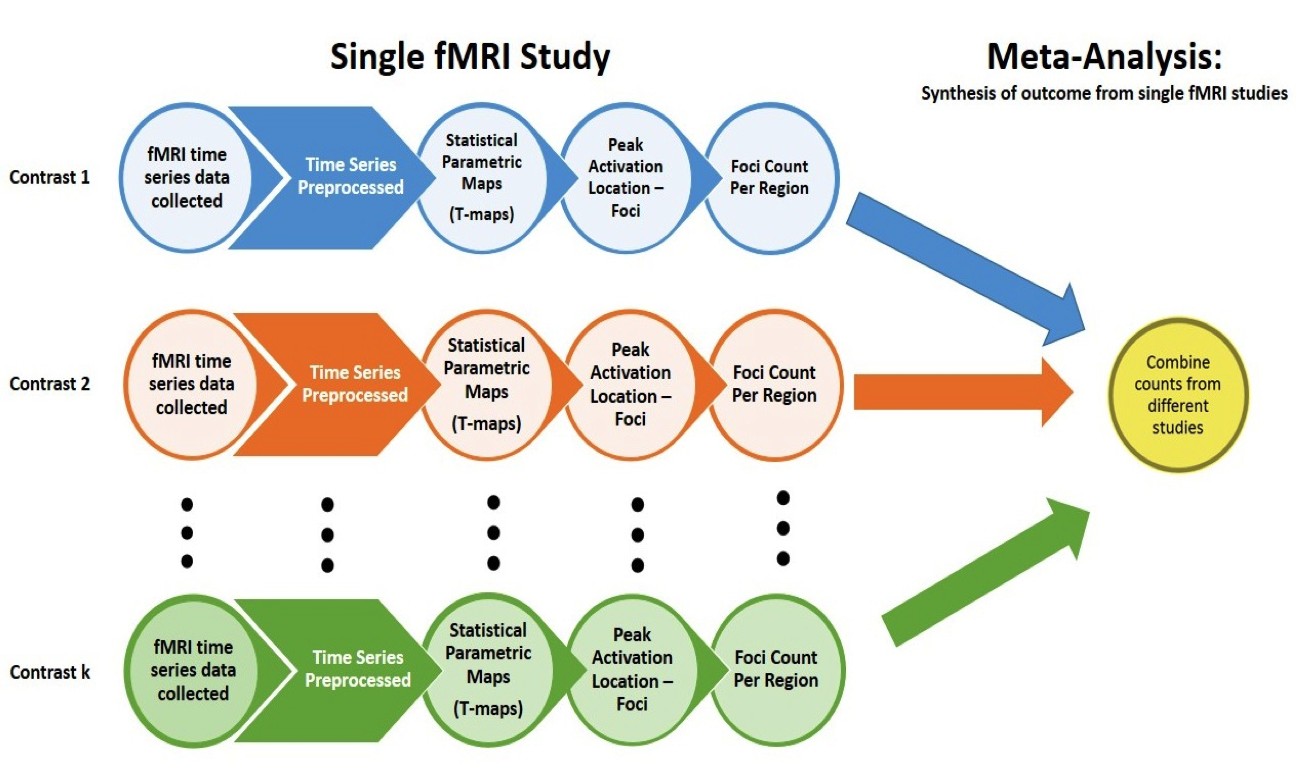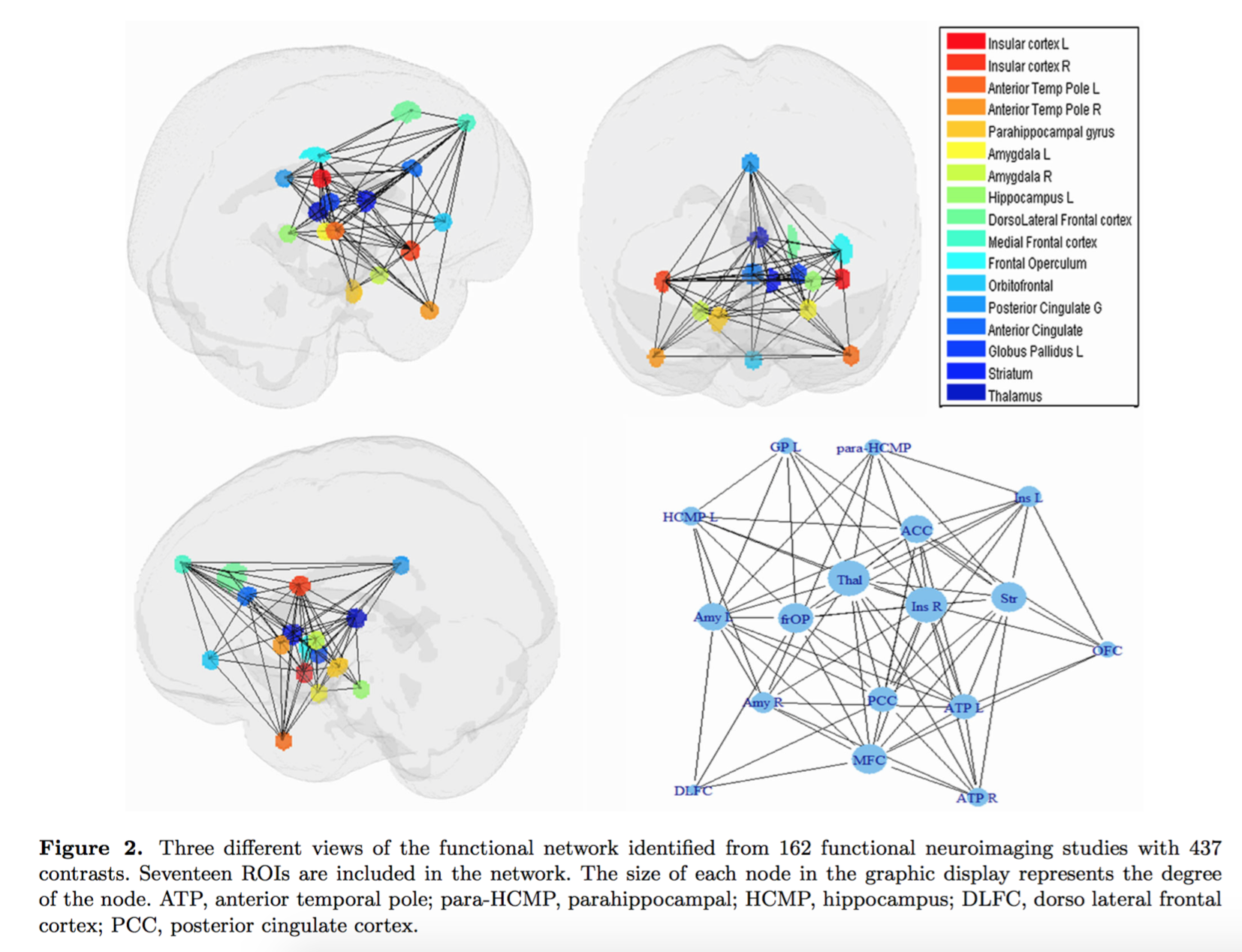INTRODUCTION
In recent years, the number of imaging studies on the structure and function of human brains has grown significantly. Most of these studies recruit a number of subjects for brain scans and apply various statistical methods to assess the association patterns between brain locations and human behavior as well as neurological disease or dysfunction. However, the limited sample sizes in many studies may lead to low statistical power. At the same time, results from different literatures on similar topics could sometimes be inconsistent.

To address these issues, researchers adopt meta-analysis methods to integrate scientific findings across different studies. Meta-analysis is typically performed on the spatial coordinates of peaks of activation (peak coordinates), reported in the standard MNI or Talairach coordinate systems, and combined across studies. This information is typically provided in most neuroimaging papers and simple transformations between the two standard spaces exist. Current statistical methods for imaging meta-analysis mainly focus on identifying activated brain locations for one type of study and do not incorporate brain-wide correlations between different studies. We are now developing systematic Bayesian frameworks to: 1) jointly model the brain activation patterns for multiple studies; 2) use hierarchical models to borrow information across studies; 3) capture location specific spatial dynamics of between study correlations. A primary scientific question that our method can address is how activations related to different emotions are correlated at different parts of brain.

REFERENCES
Kang, J., Nichols, T.E., Wager, T.D. Johnson, T.D. (2014) A Bayesian hierarchical spatial point process model for multi-type neuroimaging meta-analysis, Annals of Applied Statistics, 8 (3), 1800.
Xue, W., Kang, J., Bowman F. D., Guo, J. Wager, T. (2014) Identifying Functional Co-activation Patterns in Neuroimaging Studies via Poisson Graphical Models, Biometrics, doi: 10.1111/biom.12216.
Kang, J., Johnson, T.D. (2014) A slice sampler for the hierarchical Poisson/gamma random field model, Proceedings for Perspectives on Big Data Analysis, Contemporary Mathematics, American Mathematical Society, 622
Taylor, S. F., Kang, J., Brege, I. S., Tso, I. F., Hosanagar, A., Johnson, T. D. (2012) Meta-analysis of functional neuroimaging studies of emotion perception and experience schizophrenia, Biological Psychiatry, 71(2): 136-45.
Kang, J., Johnson, T. D., Nichols, T. E., Wager, T. D. (2011). Meta analysis of functional neuroimaging data via Bayesian spatial point processes. Journal of the American Statistical Association, 106(493), 124-134